02.1 - Redesign the street - LC
Redesign the street
Street
The street is the smallest partial synthesis of the city keeping its complexity.
- Permanence and change
- Public and private
- Property and capital: long term vs investments searching for immediate profits
- Memory and project, past and future - collective representation of the city in which everyone places its own personal project
Streets are opposite of spatial segregation and functional specialisation; only art is able to express all its richness.
The challenge in redisingning a public space is to avoid too much fragmentation or segregation.
Reclaiming road space
Traffic in town - book. Introducing the concept of avoiding cara in some environmental areas.
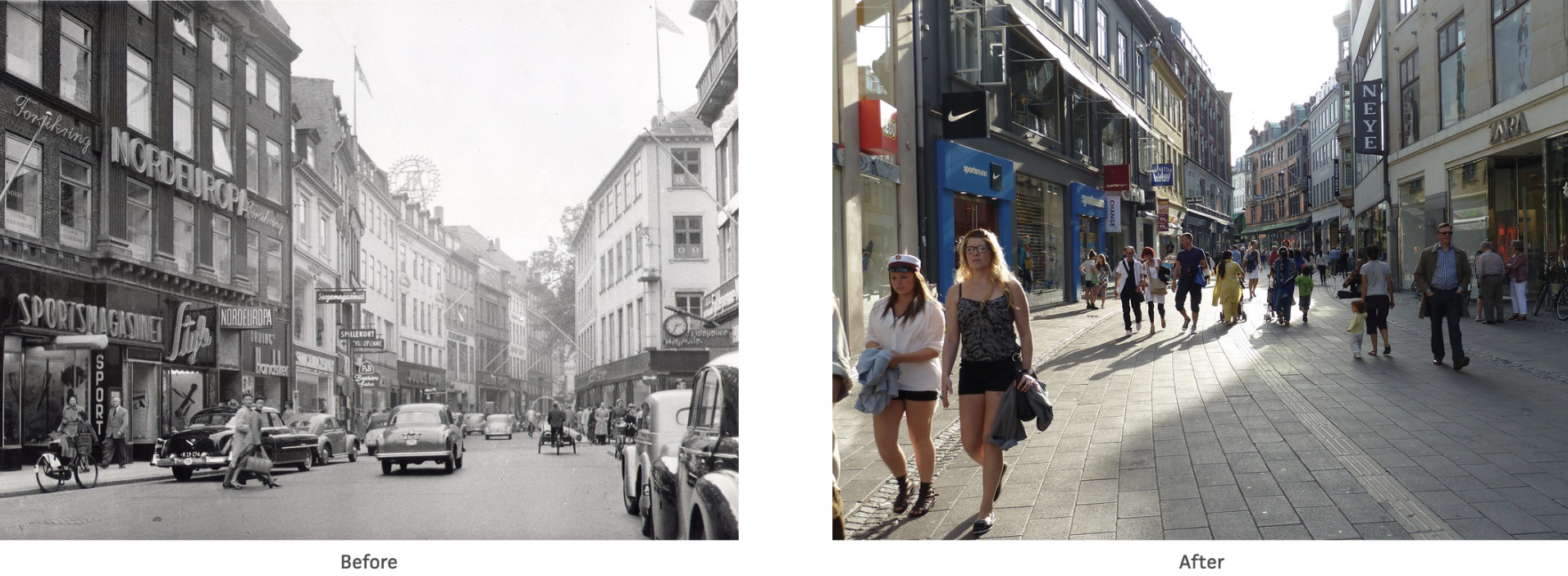
Challenges in a city:
- Health
- Climate change
- Liveability
One of the goals is to change the paradigm.
The idea that cars occupy too much space in the city.
Reclaiming road space is both a goal and a mean of the transition towards a sustainable urban mobility
Global Designing Cities Initiatives
Jan Gehl (from Copenaghen)
There are several approaches to redesign public spaces:
- Architects and urbanist
- Very important in EU in 1980/1990
- The aim was not sustainable mobility but that of civic places (making space useful for people)
- Creating links between urban components
- Spatial integration
- Top down. Municipality hires people to make projects
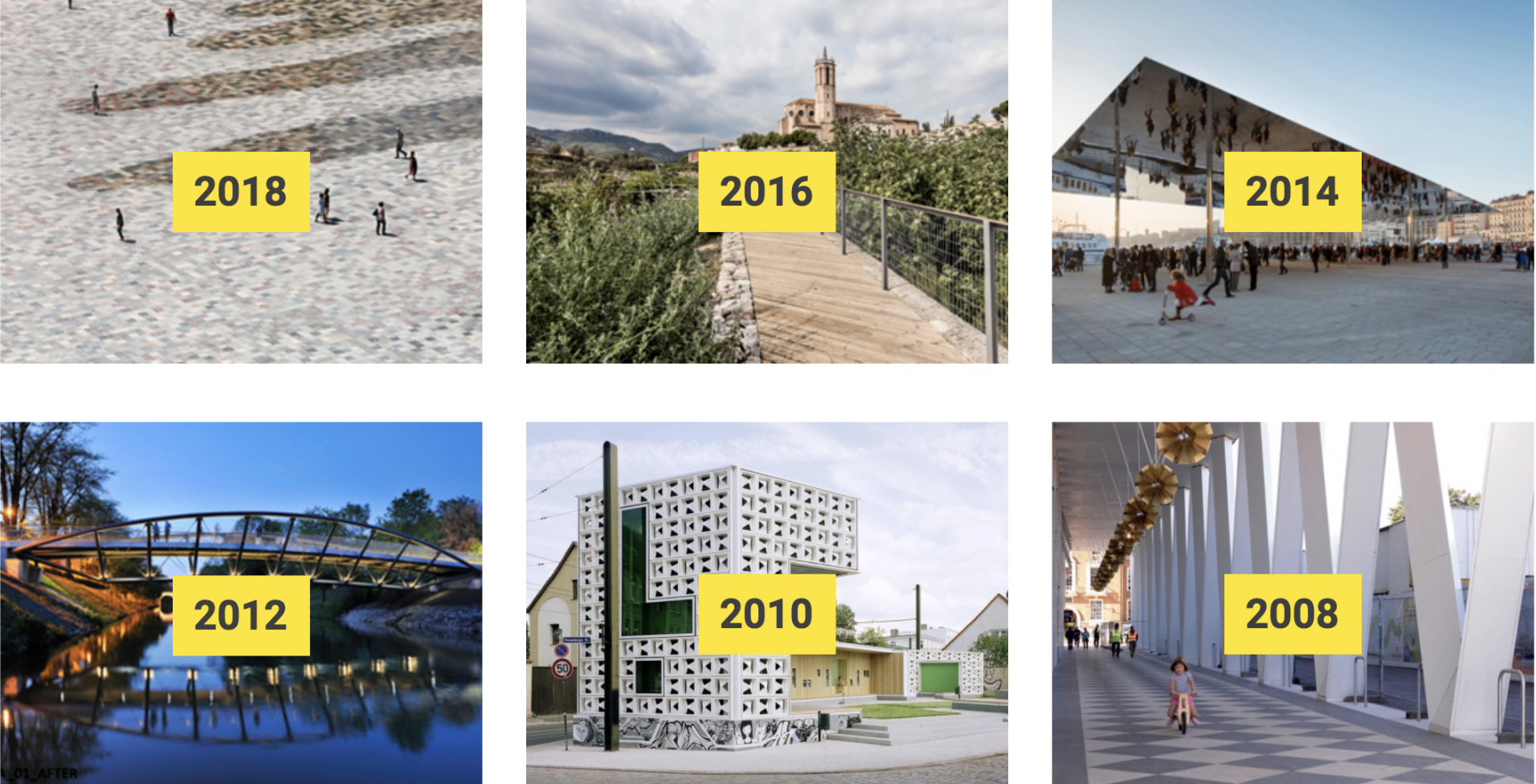
- Place making
- American approach
- Brought by the community
- More related about uses
When Barcelona was first built, it was the densest city in th eworld since it was forbidden to build over the medieval city.
This allowed to develop the city on a white canvas
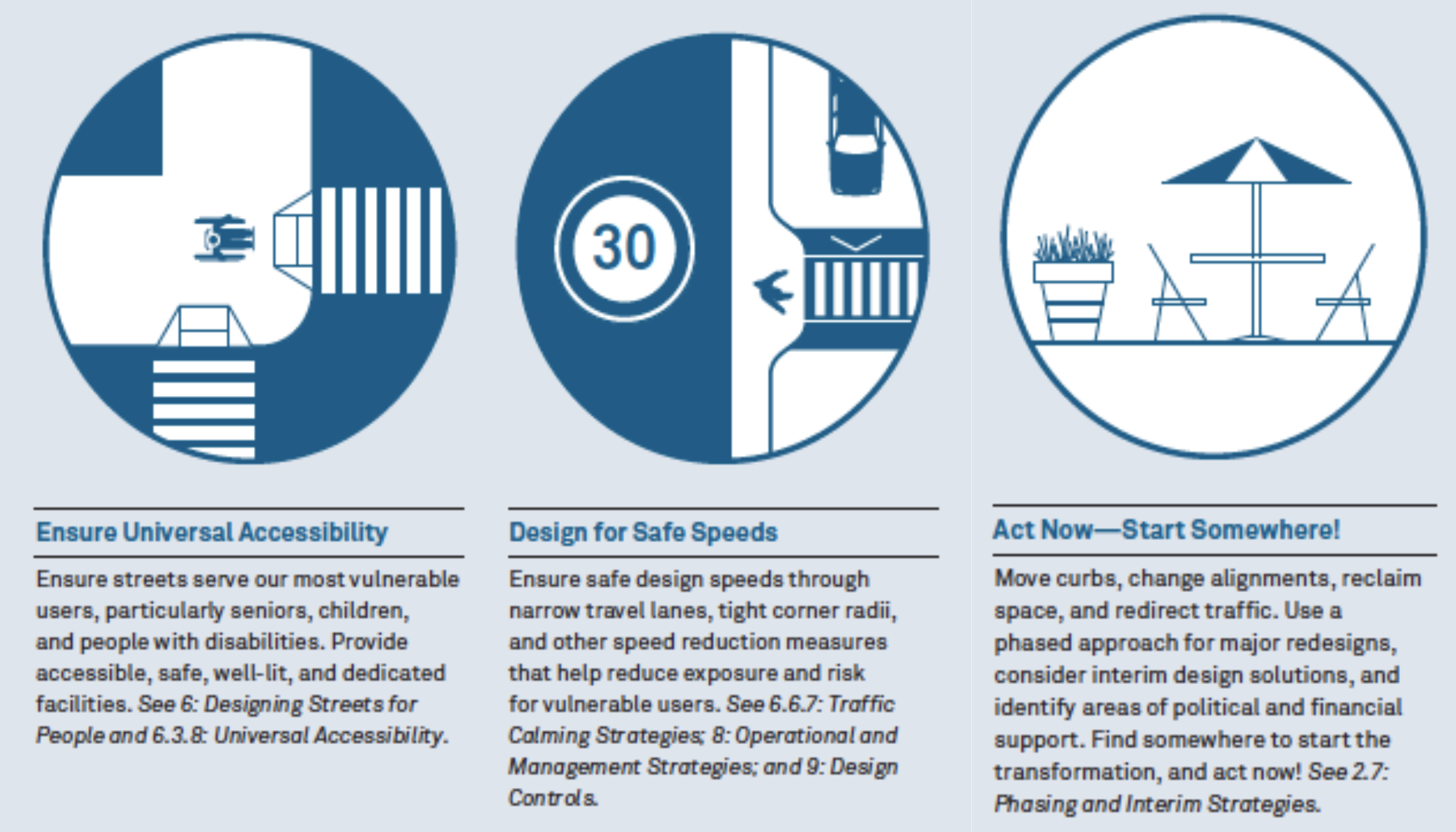
Design for safe speed. Design for the speed of the weaker user that is going to share the same space.
Cost of the Superblock project of Barcelona - 300 000 000 € (the municipality budget is 300 000 000 € in one year)
3 levels of intervention:
- Functional - change distribution of road space (draw lanes)
- Tacticla - increase liveability, divert traffic, traffic calming
- Structural
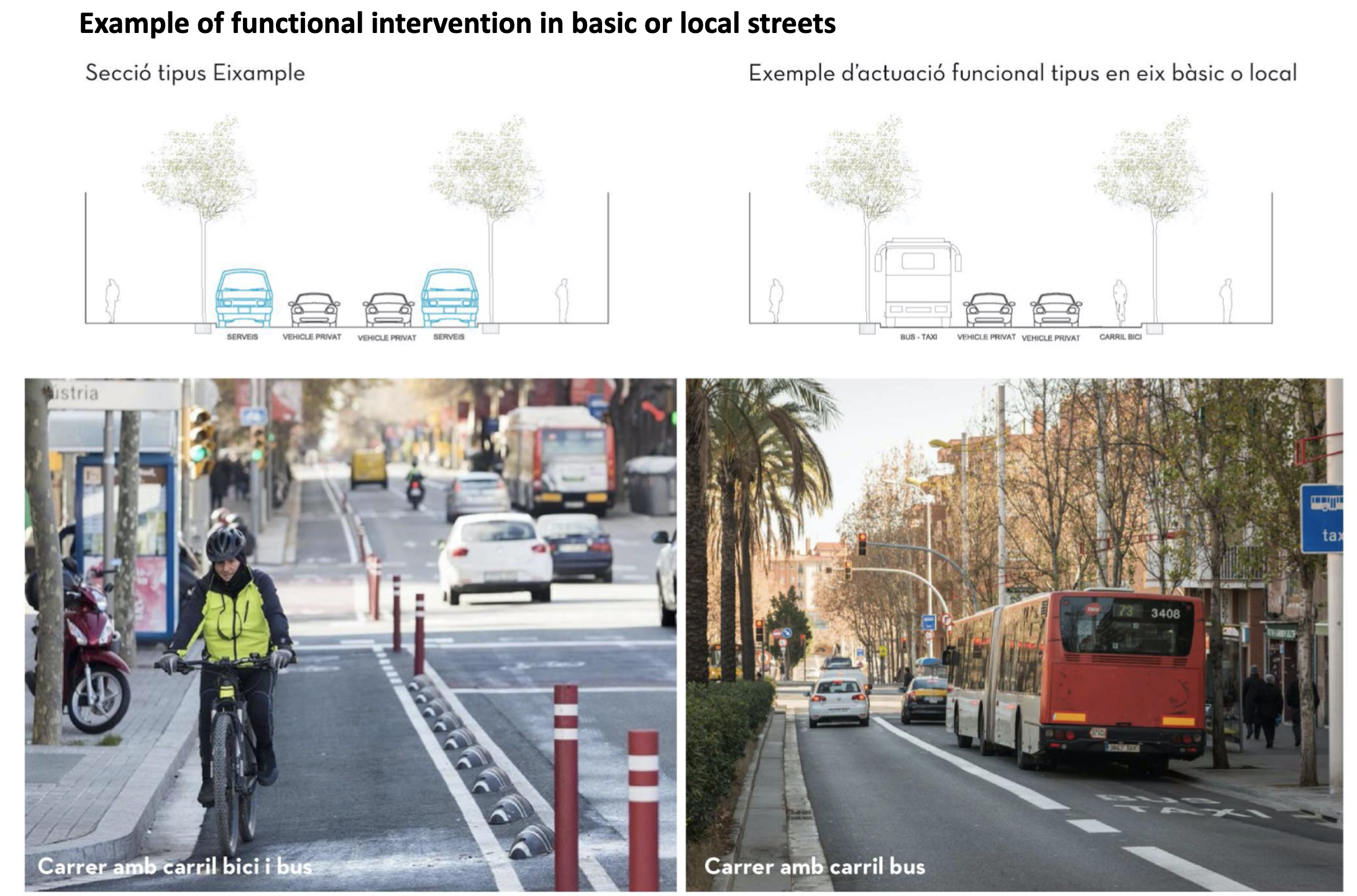
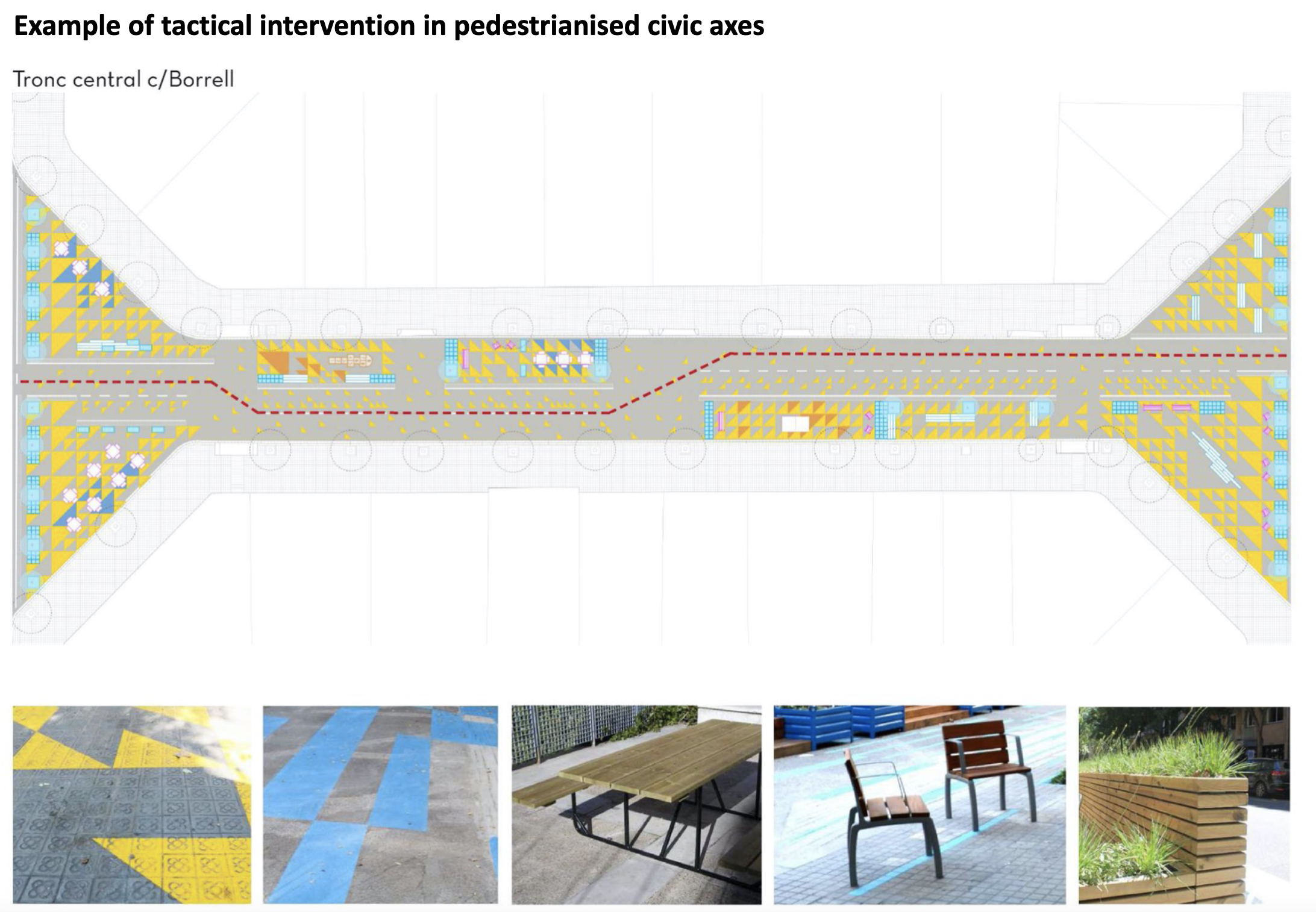
The first superblock
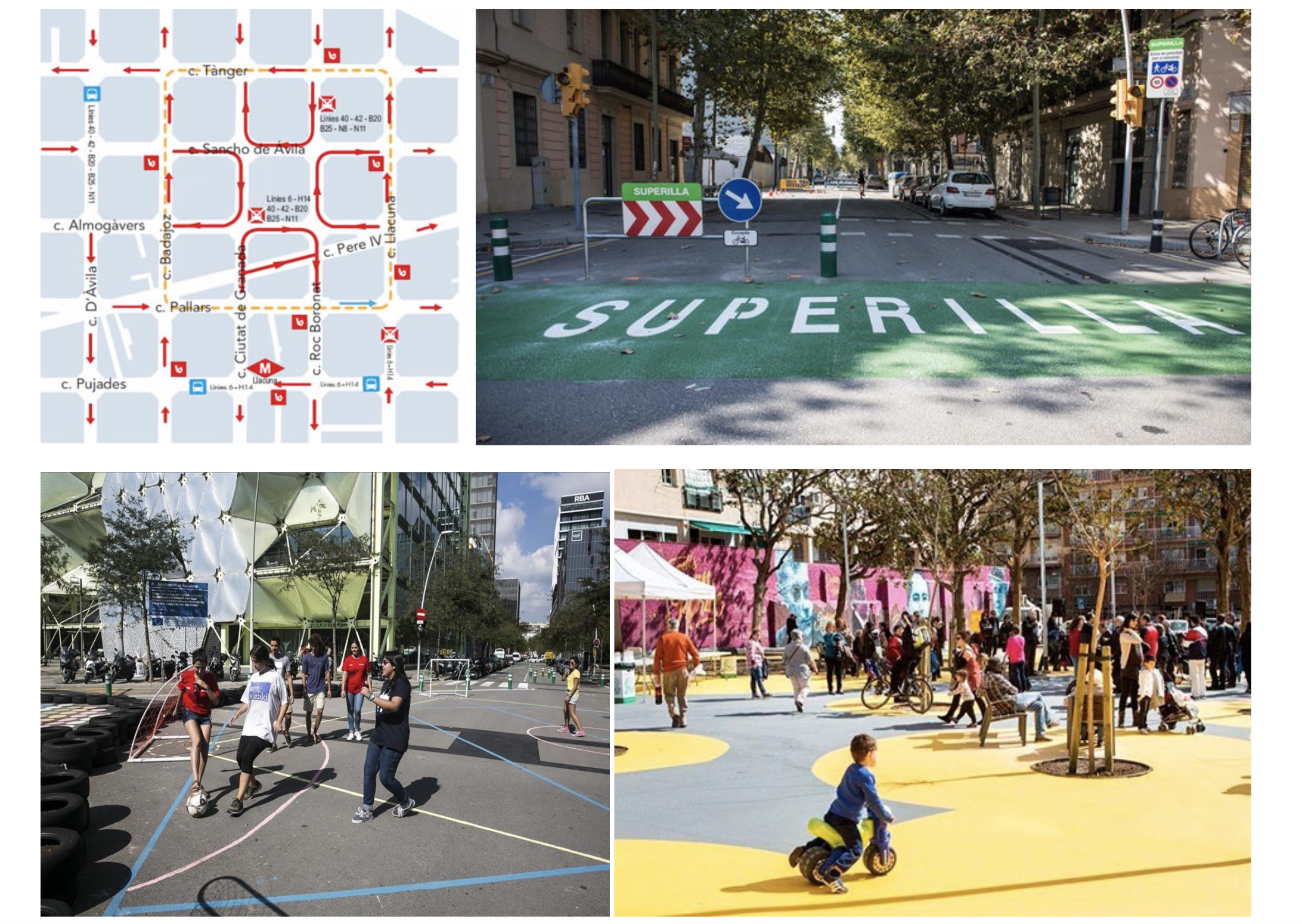
Tactical urbanism
- pragmatic
- low cost
- quick implementation
- reversible
- bottom-up
- social
- participatory
- related to gender perspective - consider the diversity of the user
In Barcelona tactical urbanism is not well accepted because people are used to high quality architecture.
Street typologies
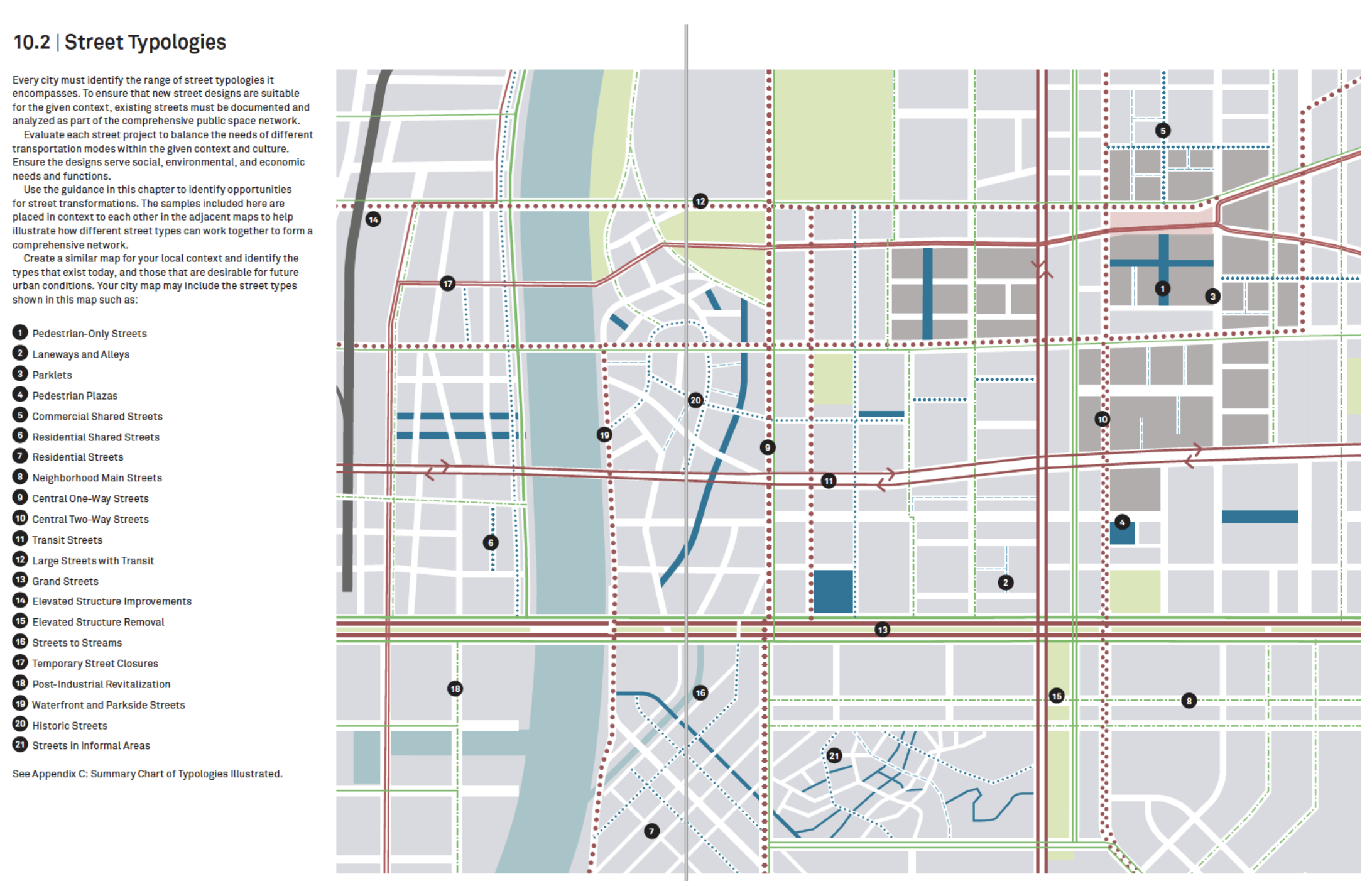
Plan the different networks for the different uses:
- Mobility
- Green
- Commerce
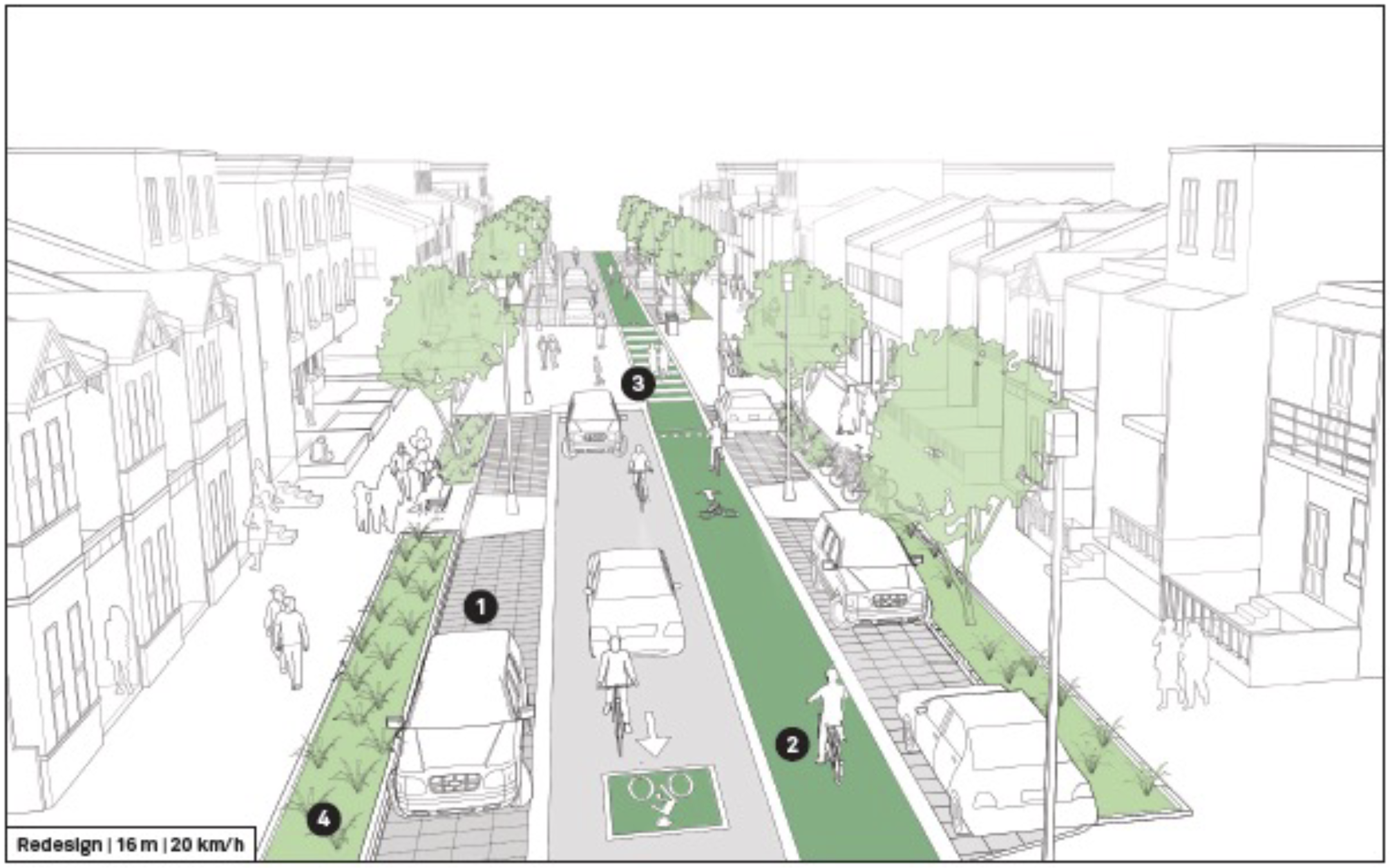
This street is residential
We can tell from:
- Transition between street and public space.
- In this case, it does not push for relations
- Presence of parking space
- 1 way for cars, 2 ways for bike
- Green areas
- Trees
- strips of continuous greenery of different kinds of vegetation
- To make an ecological corridor and complex ecosystem